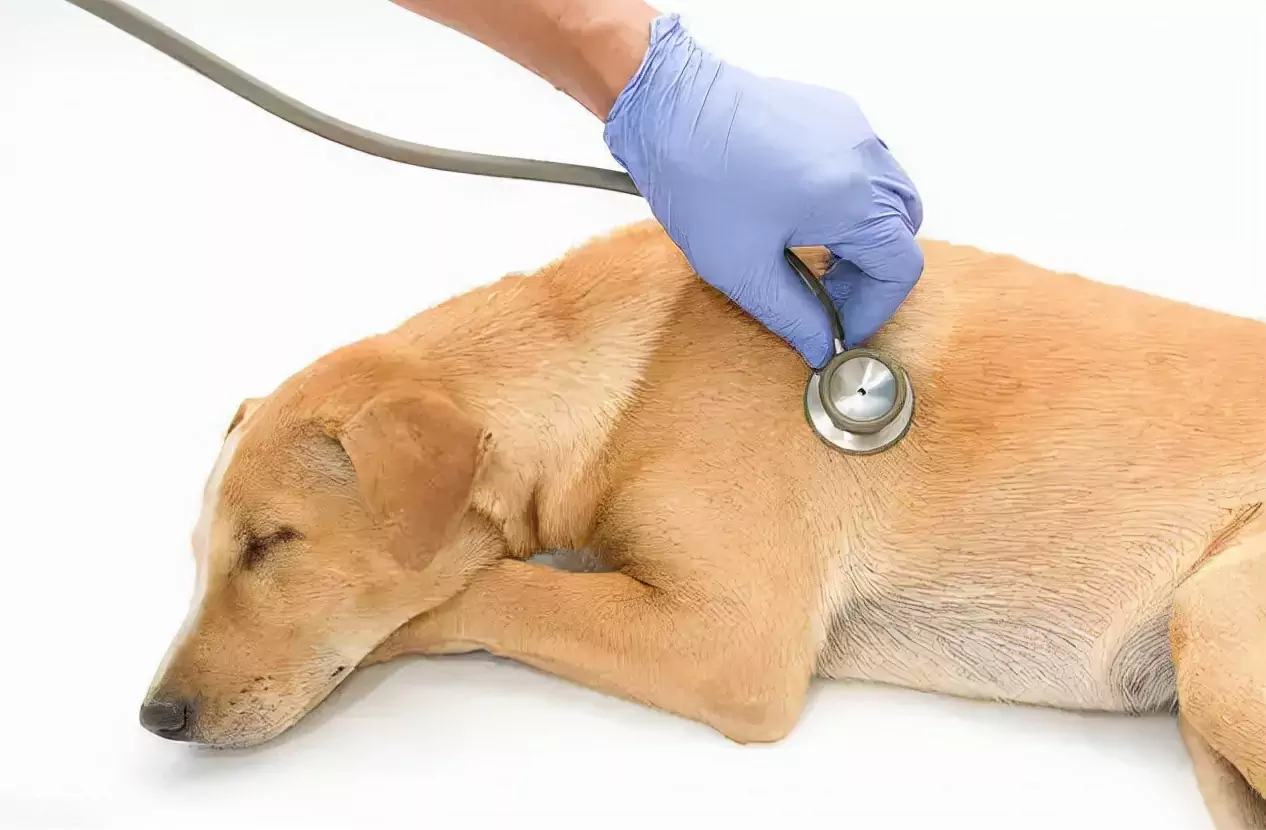Is chocolate bad for dogs? Reasons why dogs should not eat chocolate
2022-06-22
Chocolate is probably one of the tags of Valentine's Day, couples will send chocolate to each other to express their love on Valentine's Day. If you are single and happen to have a single dog at home, the two single dogs can also express their love for each other! But! Do not give your dog chocolates! As a rule, it is not recommended to let dogs eat human food because it may cause some bad consequences. Among them, the adverse effects of chocolate on dogs are very common. So what exactly are the harmful effects of chocolate on dogs? Let's find out!
I. Reasons why dogs can't eat chocolate
Dogs can't eat chocolate because it is toxic to dogs, but many dogs that have consumed small amounts of chocolate have had no ill effects. This is because of the dose that makes the dog toxic.
The components of chocolate that are toxic to dogs are theobromine and caffeine. These two compounds are nearly identical in structure and belong to a homolog of a chemical called methylxanthine.
Why can't dogs eat chocolate?
Part of the reason that methylxanthines are so dangerous to dogs is that they metabolize caffeine and theobromine very weakly.
A dog's serum caffeine concentration peaks within 30-60 minutes of consuming chocolate, then it takes 4.5 hours to eliminate half of the ingested dose, then 10 hours to reach normal levels, and finally 17.5 hours after taking the chocolate to eliminate the remaining half of the caffeine. Of course, if the dose has overdosed, then the dog is dead within 30-60 minutes.
The role of methylxanthine
Methylxanthine is a stimulant for humans, it counteracts the activation of adenosine receptors - the very glands that make us feel sleepy and reduce our physical activity. Methylxanthine inhibits these drowsy feelings and thus acts as a stimulant, so many people drink coffee to refresh themselves and eat chocolate to refresh themselves.
So how harmful are methylxanthines to dogs?
These stimulant effects are equally effective in dogs. Dogs can feel nauseous after eating theobromine and caffeine, and even vomit heartbeat, diarrhea, and mania, and if they take too much methylxanthine, they can have seizures, tremble, or even die.
How much chocolate is safe for dogs to eat?
Why can't dogs eat chocolate?
It depends entirely on your family's dog.
According to the ASPCA, mild effects of theobromine toxicity can be seen at a dose of 20 mg/kg. The median lethal dose (LD 50) is the dose of toxin needed to kill half of the sample population.
This is a common method for measuring the lethal dose of a substance in toxicology studies, and for theobromine, the LD 50 is 100-200 mg/kg.
Note that all doses are based on the weight of the dog, so if you have a Tibetan mastiff that is nearly 200 pounds, a piece of Somfy chocolate might be a nice treat for him, but the same size chocolate can make a Chihuahua fight with Mona in an hour.
Of course, what affects the toxicity of chocolate is affected by the type of chocolate in addition to the weight of the dog.
With the same volume of pure chocolate and milk chocolate, the content of theobromine and caffeine will certainly not be the same.
But whatever the flavor of chocolate, please don't let your dog see it!
If your dog eats chocolate without problems, it just means that the dose ingested is not enough to cause signs of morbidity and death, not that chocolate is not harmful to dogs.
The University of Vermont College of Medicine's Department of Pharmacology has long had research showing that feeding theobromine to dogs in low doses over a long period can lead to cardiomyopathy (a chronic muscle disease that decreases heart function and causes earlier death).

II. What are the symptoms of chocolate poisoning?
When dogs feel sick after eating chocolate, they show signs such as extreme activity, special excitement, difficulty breathing, vomiting and diarrhea, and increased urination. The health risks of chocolate for dogs depend mainly on the weight of the dog and the amount of theobromine in the chocolate. Of these, dark chocolate has a higher content of theobromine.
Several major symptoms will let you know that your dog has chocolate poisoning. The most common symptoms are irritability, increased urination, rapid heart rate, moderate to severe anxiety, seizures, asthma attacks, bloating, gastrointestinal distress, severe thirst, and elevated body temperature. If you notice any of these symptoms in your dog, it is best to take him to the veterinary hospital immediately. These symptoms usually appear six to twelve hours after eating the chocolate. Even if your dog does not show any symptoms after eating chocolate, it is best to visit your veterinarian.
What should I do after my dog has eaten chocolate?
The best thing to do after a dog has eaten chocolate is to induce vomiting. Most veterinarians will tell you what to do depending on the type and severity of your dog's symptoms. If the vet advises the parent to induce vomiting immediately, the doctor will usually remind you to add some water (hydrogen oxide) to the dog's mouth first. In addition to inducing vomiting, first aid measures available to the veterinarian also include giving activated carbon to absorb any residual toxins. This treatment will generally be effective and will soon relieve your dog's pain.
Temporary Rescue Treatment
At home, you can start by inducing vomiting with 3% hydrogen peroxide. Resuscitation is best done within 4 to 6 hours of poisoning. The shorter the time to get treatment, the better the prognosis. The effects of chocolate will last 12 to 36 hours.
Three: Why dogs should not eat chocolate
Many parents always have a lot of snacks at home, and there is no shortage of chocolate and so on. Some pet owners have asked before whether dogs can eat chocolate or not, and today I will give you this knowledge.
The composition and effectiveness of chocolate
Chocolate contains caffeine, which is a xanthine alkaloid compound and belongs to a central nervous stimulant, so when people are tired, they eat chocolate to drive away sleepiness.
Chocolate also contains theobromine, which has a diuretic effect and can open the coronary arteries, excite the heart muscle and relax the smooth muscle of the trachea, but the excitatory effect on the center is weak. It has a direct effect on the transverse muscle, increasing muscle excitability and enhancing the function of skeletal muscle to improve muscle work capacity, but at higher doses can cause muscle stiffness.
According to the above, chocolate is processed from cocoa beans and contains a variety of methylxanthine derivatives, caffeine and theobromine belong to this group of substances.
Why does chocolate affect dogs?
Humans can metabolize these substances faster than canines and can metabolize the cacao base and caffeine from the body more efficiently, so they do not feel discomfort, while dogs cannot. Serious reactions can occur in dogs that ingest about 100 to 150 mg of theobromine per kilogram of body weight, and even if the dose ingested is not too high, the dog will still need to receive first aid and treatment from the vet. The severity of poisoning in dogs depends on the type and amount of chocolate and the weight of the dog.
#
Chocolate
#theobromine
#dosage
#caffeine
#methylxanthine
#symptoms
#within hours
#stimulants
#poisoning
Was this article helpful to you?
Other links in this article
Comments

Is a dog's mouth cleaner than a human's? Dogs' mouths need regular cleaning

Can dogs eat beans? Do dogs eat beans for health?

Can dogs eat lemons? Fruits that dogs should not eat more of

Do dogs have nightmares? Are dogs' dreams similar to humans'?

Can dogs eat raw beef? The benefits and drawbacks of beef for dogs

Is raw meat good for dogs? Can dogs eat raw chicken?

Can dogs eat pomegranates?

Can dogs eat ham?Can all types of ham hocks be eaten?

How to give a dog a bath

Can dogs eat kimchi?










